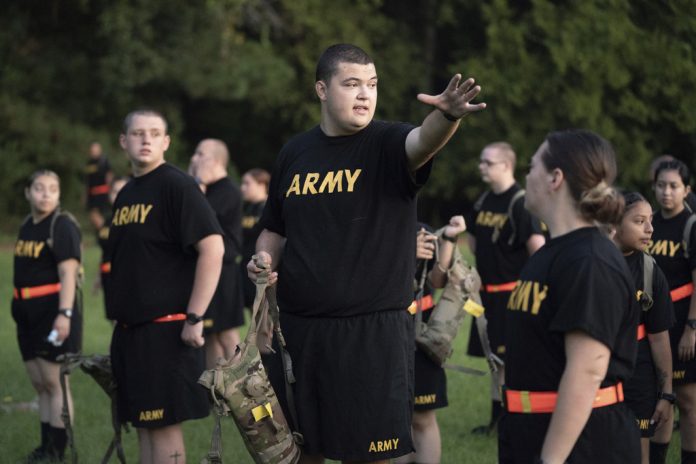WASHINGTON (AP) — Buoyed by an increase in recruiting, the Army will expand its basic combat training in what its leaders hope reflects a turning point as it prepares to meet the challenges of future wars.
The added training will begin in October and comes as the Army tries to reverse years of dismal recruiting when it failed to meet its enlistment goals. New units in Oklahoma and Missouri will train as many as 4,000 recruits every year.
Army leaders are optimistic they will hit their target of 55,000 recruits this year and say the influx of new soldiers forced them to increase the number of training sites.
“I am happy to say last year’s recruiting transformation efforts have us on track to make this year’s recruiting mission, with thousands awaiting basic training” in the next year, Army Secretary Christine Wormuth said. Adding the two new locations, she said, is a way to get the soldiers trained and into units quickly, “with further expansion likely next spring if our recruiting numbers keep improving.”
The expanded training is part of a broader effort to restructure the Army so it is better able to fight against a sophisticated adversary such as Russia or China. The U.S. military spent much of the past two decades battling insurgent groups in Iraq and Afghanistan rather than fighting a broader war with another high-tech, more capable nation.
Brig. Gen. Jenn Walkawicz, head of operations for the Army’s Training and Doctrine Command, said there will be two new training companies at Fort Sill in Oklahoma and two at Fort Leonard Wood in Missouri.
Driving the growth is the successful Future Soldier Prep Course, which was created at Fort Jackson, South Carolina, in August 2022 as a new way to bolster enlistments. That program gives lower-performing recruits up to 90 days of academic or fitness instruction to help them meet military standards and move on to basic training.
Created two years ago, the program has been cited as a key reason Army leaders expect that this fall they will reverse several years of recruiting shortfalls. In the budget year that ended Sept. 30, the Army brought in a bit more than 50,000 recruits, falling far short of the publicly stated “stretch goal” of 65,000.
The Army has 151 training companies overall that work with recruits at Fort Jackson and Fort Moore, Georgia, in addition to the 15 training companies assigned to the prep course. Army leaders have expanded the prep course, which is expected to bring in nearly 20,000 recruits this budget year and that total is expected to spike in 2025.
Due to the Army’s recruiting struggles, the number of recruits going through basic training dropped in recent years. As a result, the 15 training units, which total 27 soldiers each, including 16 drill sergeants, were available for the prep course. But as the prep course grows, those units are not available to do basic training.
“We don’t want to mess with that because right now that formula’s working and it’s provided a lot of value for the Army,” Walkawicz said. So, the Army is creating the four new companies and has developed plans for more if needed.
She added that Fort Sill and Fort Leonard Wood have the infrastructure, the barracks and the room to accommodate the new units and could take more if needed. The costs of the program are limited because the Army already had the equipment and rooms required, but there will be maintenance, food, staffing and other costs. Army officials did not provide a total price.
The move to add units is the latest change in what has been a tumultuous time for the Army. Coming out of the Iraq and Afghanistan wars, when the service grew dramatically to fill the nation’s combat needs, the U.S. military began to see recruiting dip.
Unemployment has been low, corporate jobs pay well and offer good benefits, and, according to estimates, just 23% of people age 17 to 24 are physically, mentally and morally qualified to serve without receiving some type of waiver. Moral behavior issues include drug use, gang ties or a criminal record.
Those problems were only amplified as the coronavirus pandemic took hold, preventing recruiters from meting with students in person at schools, fairs and other public events.
In 2022, the Army fell 15,000 short of its enlistment goal of 60,000, and the other services had to dig deep into their pools of delayed entry candidates in order to meet their recruiting numbers. Then in 2023, the Army, Navy and Air Force all missed their recruitment targets. The Marine Corps and the tiny Space Force have consistently hit their goals.
Partly in response to the recruiting shortfalls, Army leaders slashed the size of the force by about 24,000, or almost 5%. They said many of the cuts were in already vacant jobs.
Source: post





